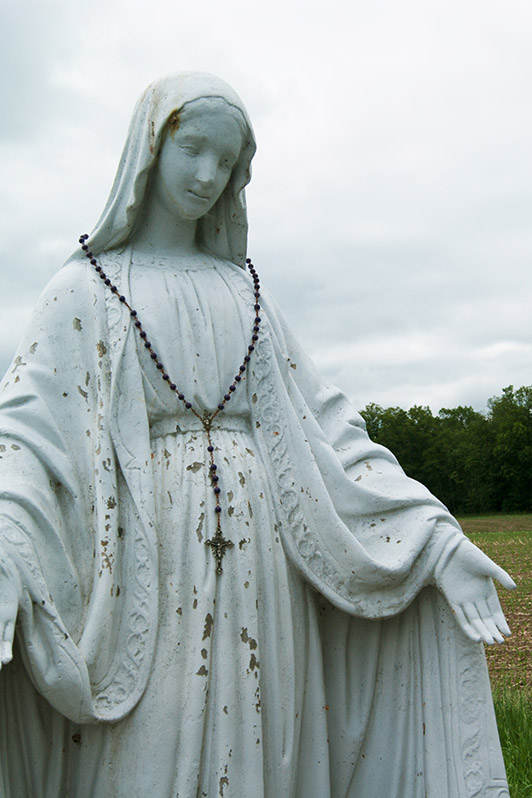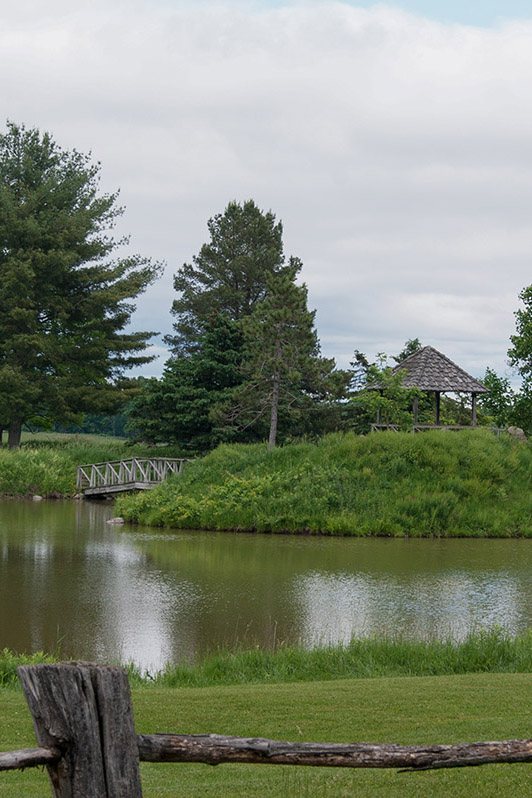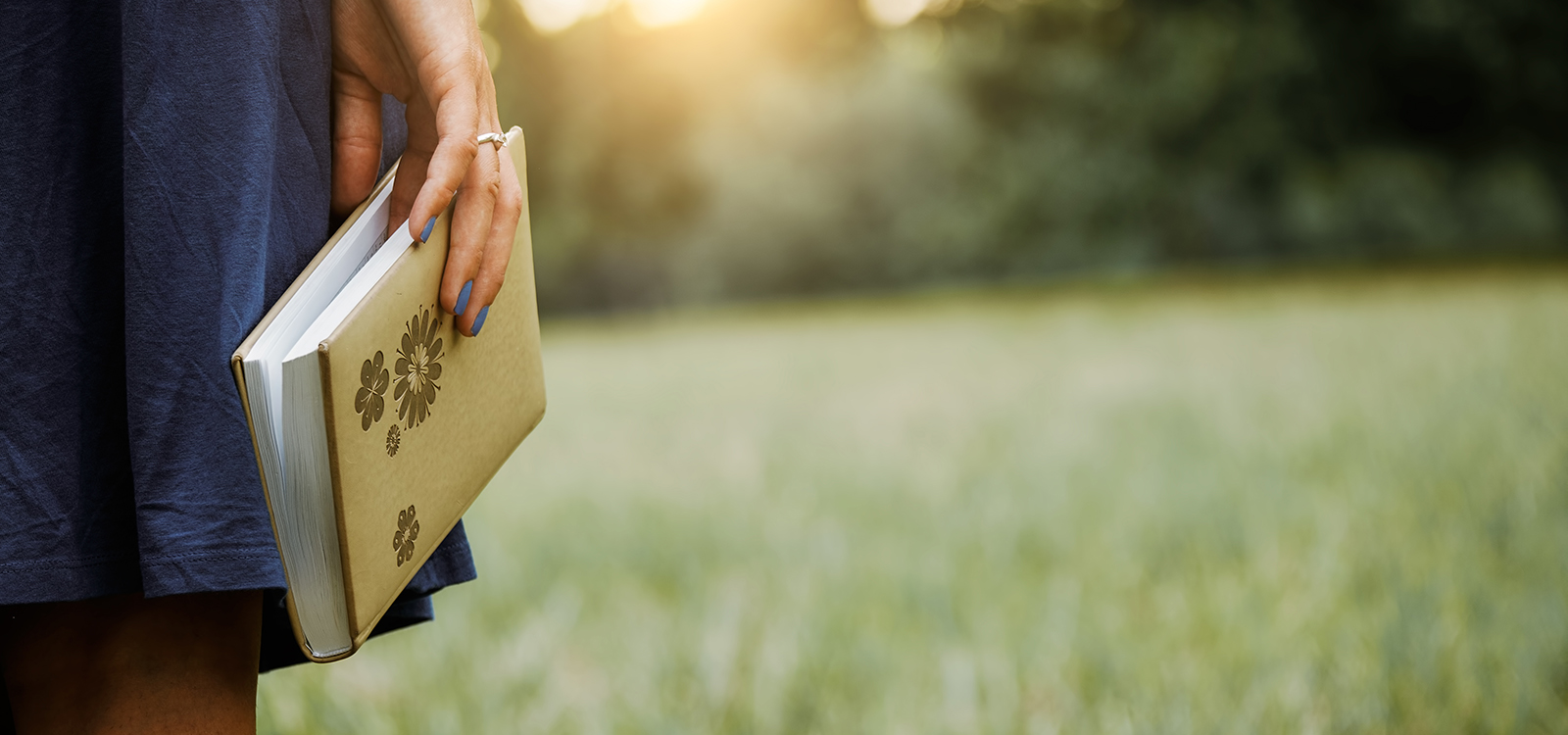More than Monks: What I Learned About Myself During a Monastery Retreat
I came here in search of calm. As someone with both depression and anxiety, my mind fluctuates between hyperactivity and listless lows. After months of stress, daunting deadlines, and the loss of my beloved uncle, I just wanted to stand still. A few days at a monastery sounded like the perfect pause button. Many share that same desire. The most recent study by the Global Wellness Institute, a non-profit organization that aims to educate the public and private sector about health and wellness, calculated that global wellness tourism is a $563 billion industry. In their 2018 industry research report, the institute claims that the wellness real-estate sector (including spiritual, exercise, spa, or other variations of wellness retreats) will annually expand by six percent for the foreseeable future. Many destinations offer special experiences to assist the anxious and the over-committed with digital-detox offerings — from digital detox retreats that seem like wifi-less camps for adults to digital detox tours that include homestays in places like Morocco to digital wellness treatments at luxury hotels. I sought a simpler way to unplug and to act on a growing body of research that documents solitude’s ability to increase feelings of calm, peacefulness, and relaxation and subdue the intensity of both positive and negative emotions. In those studies published in the Personality and Social Psychology Bulletin, participants sat alone in comfy chairs, away from electronic devices, and did nothing for 15 minutes. That short time left most participants feeling less excited, less energized, less anxious. Surely, a few days at a monastery would deliver similar results. I booked my $65-a-night stay at the abbey and hoped it would allow me to dampen my grief, unplug, and embrace solitude.

Even under a cloudy sky, the Abbey of the Genesee offers guests serenity. Photo by Lindsey Sabado.
My curiosity about the abbey also prompted me to go. I had visited a nunnery on numerous occasions, but never a monastery. At 11, I met my aunt, a cloistered nun, for the first time at her convent in Nebraska. A caravan of relatives and I drove out to the Carmel of Jesus, Mary, and Joseph and crowded into a single room separated from the next by a metal grate cut into the wall. My aunt, Sister Perpetua, sat beside the Mother Superior who remained in the room for our entire visit as if monitoring our conversation. A smile cracked open across Sister Perpetua’s face when I played my violin for her and when my mother gave the sisters a sewing machine. We placed the sewing machine on a turntable that spun to connect the visiting room to the rest of the convent. After a few hours, my family jumped back into our cars and drove toward Chicago, our next destination. As my mother watched the convent grow smaller and smaller behind us, I saw tears roll down her face. My mother was Sister Perpetua’s closest companion before she left her life with her six blood sisters and numerous half-siblings behind to join the Sisters of Carmel. I thought spending time at the abbey might help me understand what could be worth that.
The Abbey of the Genesee sets simple guidelines for its guests. Visitors cannot enter the monastic enclosure reserved for the abbey’s monks, use phones or other tech, or speak while in or near the guest house. I welcomed those rules in the days before my stay and looked forward to powering down my laptop and phone. I live connected to those devices like a dog on a leash. Between work, social media, and mindless browsing, I use the internet for the majority of the day. Silencing these devices sounded peaceful. Before leaving for the retreat I told myself I would switch my phone off and stash it under my mattress for the duration of my stay.
I came here in search of calm. As someone with both depression and anxiety, my mind fluctuates between hyperactivity and listless lows.
I thought I could do this self-imposed digital detox. I don’t need my phone, I told myself, I want it. But after just one night at the abbey, I caved. Throughout the day my hands, unoccupied without my phone to hold, dangled at my sides like dead weight. Once alone in my room, where no one but God could see, I took out the device. At first, I just checked texts and avoided the internet. Then I crossed that line too, going online but telling myself it was only for work purposes. I wanted to stay on top of assignments and emails. Within the hour, I found myself looking at dessert hummus recipes on Pinterest.
I never thought of myself as addicted to anything, but my “detox” indicated otherwise. In 2017, the Deloitte Global Mobile Consumer Survey found that smartphone owners in the United States check their phones almost 50 times a day, and I know I do so even more. Research has documented technology’s harmful effects — isolation, insomnia, decreasing social skills, obesity, and depression. For some, their connection to their devices becomes more of an addiction. A 2018 Pew Center Research report on the future of well-being in a tech-saturated world queried 1,150 experts, scholars, and health specialists, and although the majority predict individuals’ well-being will be helped by technology, one-third said people’s well-being will be more harmed. “We now have a substantial body of empirical and experiential evidence on the personal effects of the internet, social media, and smartphones. The news is not good,” wrote Nicholas Carr, author of The Glass Cage: What the Internet is Doing to Our Brains, as part of the report. “While there are certainly people who benefit from connectedness — those who have suffered social or physical isolation in the past, for instance — the evidence makes clear that, in general, the kind of constant, intrusive connectedness that now characterizes people’s lives has harmful cognitive and emotional consequences. Among other things, the research reveals a strong association, and likely a causal one, between heavy phone and internet use and losses of analytical and problem-solving skills, memory formation, contextual thinking, conversational depth and empathy, as well as increases in anxiety.”

A statue of Mary stands in a field between the Abbey of the Genesee and its guesthouse, welcoming guests as they leave coins and rosaries at her feet. Photo by Lindsey Sabado.

The pond and garden are part of the monastic enclosure which only the Trappist monks can enter. Photo by Lindsey Sabado.
Those consequences help explain why tech addiction resembles others. Christopher O’Reilly, executive director of Teen Services & Breakthrough at Caron Treatment Centers, an addiction counseling facility with several locations around the U.S., says he sees the same symptoms in tech-addicted patients as those addicted to alcohol, drugs, or pornography. O’Reilly approaches smartphone dependency the same way he treats more traditional addictions. He suggests acknowledging the negative impact of the behaviour and addressing its mental and physical symptoms. Next, he suggests doing the deeper work and finding ways to cope with life without numbing your emotions with media that offers distraction and helps pass time. Like, for example, looking at hummus recipes on Pinterest.
On top of disconnecting from technology, staying at the abbey also meant training myself to embrace silence and taming my mind’s tendency to overreact to a blank to-do list. I spent most daylight hours wandering around the abbey’s grounds. The green fields of tall grass unfurled before me, swaying gently with the wind and stretching out to meet the horizon. Clouds hung heavy in the dim, grey sky and suppressed the vibrant colors of the trees and crops below. The absence of conversation, companionship, and the yawning silence highlighted my solitude, my aloneness. As did memories of the uncle I lost. I remembered his exuberance for life and how he would throw me on his shoulders as a child and run into the waves of the Pacific Ocean. He was probably one of the few Patriots fans who lived in Maui, and his laugh boomed so loud and so full that the neighbors often overheard his joyful outbursts. He left behind my mother’s sister and their 11-year-old daughter, and his memorial loomed two weeks away. I wanted the company of monks and their spiritual practices to help me handle my grief until then. But with unlimited time to think, I dwelled on this loss. Soon, I lacked the ability to differentiate between my grief from my depression and my stress from my anxiety. They all undermined my energy and weighted me, making the smallest movement a struggle. The small bedrooms in the Abbey of the Genesee guesthouse offer only the necessities. My room failed to offer any comfort for my mental angst. It included a twin-sized bed with a thin sheet and stack of wool blankets, a wooden desk with a lamp and worn-out Bible, a chair, and one wall shelf. I felt trapped, as if sentenced to an evening without comfort and only scratchy covers to shield me from the air conditioning that I couldn’t turn off. Though my night of overthinking started with thoughts of my now fatherless cousin, my mind traveled far away, deep into the existential numbness that depression often creates for itself. But of course, that’s the problem with mental illness — it’s all in your head. The sickness sits between both logic and feeling and tries to confuse the two. I spent my second night at the abbey like this, wrestling with a sadness that surpassed mourning.
With no one at the abbey to share these thoughts with, I felt my aloneness most profoundly at meals. For dinners, a bell called guests into the dining area for prayer and then a simple meal served with Monks Bread, which the abbey produces and sells at grocery stores. I sat at the silent dinner table eating a clementine salad when I read a poster hanging from a bulletin board. It explained that solitude is not the absence of others, but the presence of the self and of God. Myself and God are lonely company, I thought. Over dinner, I became hyper aware of the clanking of my silverware and the dull thud of my chewing. A wave of embarrassment ran through me when I dropped a knife on my ceramic plate. The woman sitting across from me didn’t seem to mind. She wore a solemn face and appeared caught up in her own thoughts. Based on her white hair, I guessed she was in her late 60s, but other than that guess, I failed to decipher much about her. She smiled at me and then continued cutting into her fried chicken slowly and deliberately. It felt rude not to introduce myself considering I had run into her in the guesthouse hallways numerous times throughout my stay. Without conversation we remained strangers — sharing meals but not ourselves.
Rather than some kernel of wisdom proffered by a wise man, I received confirmation that even monks feel stress and the weight of time. And maybe that was enough.
My only other interaction with guests occurred that evening. The abbey’s monks spend their days in praise and prayer, and they welcome visitors to follow their liturgy schedule. I and about 10 other guests, still anonymous to me, walked to the abbey for the 5:30 p.m. vespers. The others on the retreat all looked at least 20 years older than I am and seemed comfortable at the abbey. Like me, they all came alone. As I sat in the pews, my eyes wandered through the sanctuary. The high, wood ceiling, held up by wooden beams, didn’t quite touch the stone wall, leaving a gap that let the outside air in. Light traveled through the geometric stained glass windows, casting hues of purple and blue across the sanctuary. The monks sat upright in the wooden pews of benches attached to desks, separated from the rest of the congregation by railings. They wore white robes that touched the floor, and some arrived in wheelchairs or with canes. Accompanied by an organ, the monks sang hymns with lyrics taken from the Psalms. The dark, ominous tones of the choir moved in melodies that sounded more like speech than music. Many of the Psalms relay the same idea: in life, there is suffering, but in God, there is hope. The words King David wrote remain as relevant today as when he wrote them. The other 10 guests in the pews probably connected to them in the same way. I imagine that despite our differences, we all arrived her looking for the same thing. The fight for the mind between pain and hope — in whatever or whomever that hope may lie — is the crux of the human condition. We all have to work to mediate it, me and the monks alike, which requires time and honesty with oneself.
On my final day, I met with a monk for a spiritual consultation. I decided to seek out someone who likely possessed more enlightenment than I and who could offer some help for my whirring mind. In his long, white robe, a monk with a heavy beard and thin, wire glasses sat across from me in his office, which featured minimal decor like the guestrooms. We talked about the grief I felt since the death of my uncle, but after giving a quick condolence, the monk switched the conversation topic by asking me about my job. I brought up my depression and its ability to complicate my relationship with God, and his response was simple: pray more. He looked at the clock for the third or fourth time and assured me that he valued our conversation but needed to move on to his next consultation. Rather than some kernel of wisdom proffered by a wise man, I received confirmation that even monks feel stress and the weight of time. And maybe that was enough. I left his office and headed toward my car, passing a man likely arriving for that appointment. He appeared to be in his mid-40s and wore jeans and a simple black t-shirt. Acting on the guesthouse habit, neither of us said hello. As he passed, I wondered to myself what burdens he hoped to lighten and what he would find in the silence.
Banner photo by Marita Pérez Díaz.




